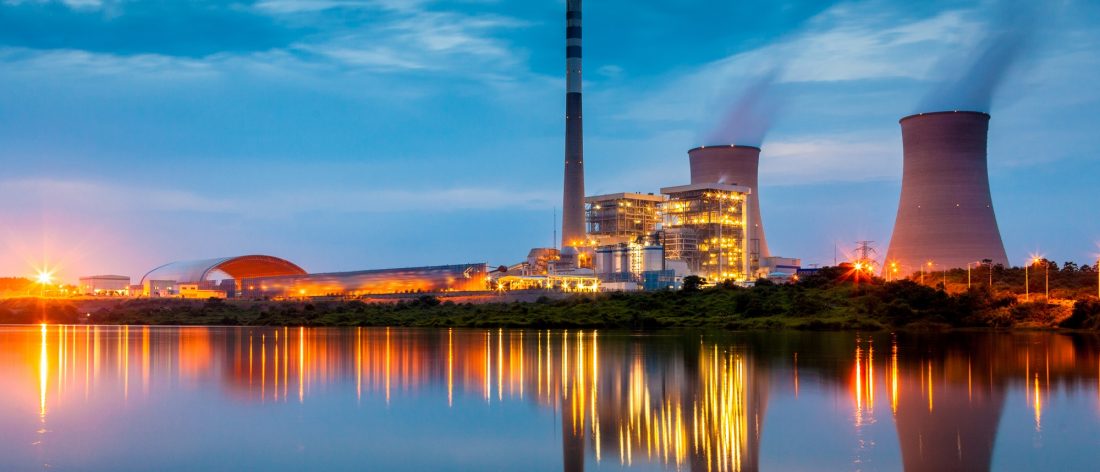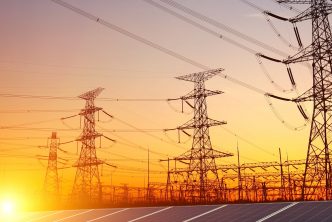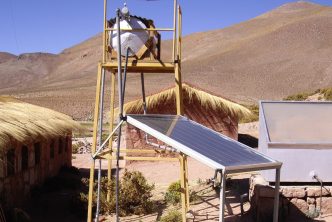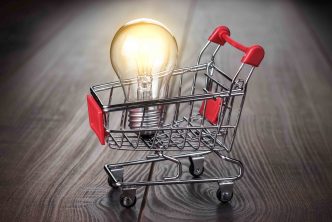The Decade of Gas
THE PROBLEM
Introduction
The world’s population is estimated to reach 10 billion in 2060, and this increase is expected to be accompanied by a commensurate increase in energy demand. This situation calls for aggressive exploration of alternative non-traditional energy sources. Nigeria is not left out of this unfolding dilemma as its energy need in this same period is projected to increase. Currently, Nigeria’s electricity energy supply is so poor that only 51{1c02100822988c48c7b0a484ab61ac3d7f398d67c2f66594d88b2db33072d9d9} of its population have access to electricity, and a subgroup of this can boast of 12 hours of electricity supply a day. According to the Nigerian Society of Engineers, just 7 percent of the estimated 70,000MW generated is received from the National grid. The other 93 percent? It is primarily generated from diesel or petrol power generating systems, for example, petroleum fuel oil generators.
While Nigeria is rich in energy sources, it ranks low on the reliable electricity access index. The drive for renewable energies in Nigeria has surfaced on the power scene; however, as many argue, it will take more than solar panels to electrify and power Nigeria. It will require much more for Nigeria’s industries to meet the increasing energy demand vis-a-vis the population.
Nigeria’s power generation is predominantly thermal (gas-powered). However, in recent years there has been hardly any talk or speculation around the Nigerian Gas Sector. The majority of Nigeria’s gas is sourced as associated gas from oil-well exploration. However, non-associated gas reserves are abundant in the inland basin and Niger Delta basin. Nigeria gas reserves, now at 203.16 Trillion Cubic Feet, are the ninth-largest[1] in the world. This current reserve can last 92 years and dramatically increase economic growth through an upsurge in power generation for Nigeria’s electricity customers. Presently, while prominent in Nigeria’s consumed energy, gas-powered electricity does not cut a fraction of used energy.
The logical next justification is to follow Nigeria’s plans to expand its industrial and electricity generation while intuitively creating a market for Autogas to reduce reliance on crude. All plans have remained futile in recent years. Despite this, the Nigerian government is fixed on changing the narrative through deliberate interventions with the Central Bank of Nigeria, private investments, and even changing fuel for automobiles.
Nigeria’s readiness to integrate its abundance of gas would largely depend on investment, enabling environment, and policies. The delving question therein: Is Nigeria ready for gas?
CONTEXT OF THE PROBLEM
History of gas in Nigeria
Since 1990, gas production has steadily increased, with daily production rising above 8.2 bscf/d (Billions of standard cubic feet of gas per day) going as far back as early 2015. In April 2019, of the 1.2bn ft3/d of gas produced locally, approximately 41 percent was exported, and only 48 percent used domestically; meanwhile, the remaining was flared[2].
Nigeria’s gas reserves occur as Non-Associated Gas (NAG) and Associated Gas (AG), natural gas, and as a by-product of crude oil (which is either dissolved or above the in-well oil) respectively. Oil wells across Nigeria have predominately been known to contain AG. A significant trade-off from AG is the flaring of the undesirable by-product to produce flared gas. This trade-off is primarily frowned upon following global commitment to reduce emissions, of which Nigeria is a signatory[3]. Regulations have been introduced to the sector to commercialize and reduce the waste from flared tips[4].
Nigeria, the largest user of oil-fired back-up generators on the continent,[5] could benefit from flared gas, currently enough to generate 2.5 gigawatts of electricity to the national grid, which would rid the country from its reliance on diesel generators. The Domestic Gas Supply Obligation signed into in 2017 and the Petroleum Act of 1969 mandates that all gas producers reserve a percentage of their gas production [EO2] [OE3] for domestic national projects like the National Grid. In Nigeria, the National Grid is served by 28 Generation Companies (GENCOs).
Also, the on-grid electricity generation remains almost at an all-time low. GENCOs, on average, dispatch 4,000mw of its installed capacity leaving the market in severe debt. Worse still, global demand for AG is expected to decline by over 4{1c02100822988c48c7b0a484ab61ac3d7f398d67c2f66594d88b2db33072d9d9} following the disruptive oil clash. Oil wells are also planned to close off before a proposed gas future is prudent. Nigeria gas to power sector, relying on AG, will indefinitely have to equate the several bottlenecks[6] along the gas supply value chain for domestic projects or match up with the exploration of NAG. That would define the futuristic limits or, in fact, the decade of gas.
Recent and critical domestic projects like the East-West gas pipeline, the Abuja-Kaduna-Kao pipeline, and NLNG Train 7 have proven to improve Nigeria’s gas evacuation within the coming decade. The Federal Government primarily funds the existing projects, but observers have remarked ‘slow momentum.’
SOLUTION
Proposed solution
National Gas Expansion Programme (NGEP)
The NGEP was introduced in 2020 to harness Nigeria’s gas resources and the outlook potential for Nigeria. Across Nigeria’s extractive sector, poor private investments have resulted in low domestic, commercial, and gas utilization viability. The minimal production of Compressed Natural Gas (CNG) and Liquefied Petroleum Gas (LPG) for transportation fuel and domestic cooking have engendered economic growth in Nigeria’s gas industry. The mandate of NGEP is to create a framework for Nigeria that recognizes CNG and LPG as an alternative fuel, a low carbon emission source of energy. This framework includes the adoption of Autogas for automobiles.
Under the NGEP, the Central Bank of Nigeria, in collaboration with the Ministry of Petroleum Resources (MPR), introduced a N250 billion intervention facility[7] with an interest rate of 5.0 percent per annum and 9 percent per annum up to February and March 2021, respectively. [EO4] [OE5] This initiative was introduced as a way to curb the investment gap in the sector.
It is anticipated that besides the Central Bank’s facilitation, the Ministry of Petroleum Resources (MPR) shall ensure independent due diligence is undertaken to ascertain the economic impact and commercial viability of proposed projects. On the other hand, participating banks are expected to monitor financed projects and render periodic returns accordingly. Through this partnership, the Central Bank and participating bank, alongside the MPR, will promote frameworks[8] for gas investments in this decade.
Gas should meet Nigeria’s growing share of energy demand following a swift implementation of the Federal Government’s Gas Master Plan. It is unclear how much influence credit facilities like this CBN intervention facility will have towards enticing investors to play in the value chain. Still, the deliberate intervention and transparency might form a better reputation for investors alongside the Petroleum Industry Bill taking shape.
The rationale of the solution
Through the NGEP, the Central Bank provides a package to improve access to finance for private investment in the gas value chain, which in the long–term, aids gas infrastructure and the optimization of domestic gas resources for economic development. This inevitably includes adopting LPG as an alternative fuel for transportation and power generation. With daily production above 8.2 bscf/d, through aggressive investments into the gas sector, the Federal Government anticipates the output from gas to increase by 30 percent in the next two years.
The flagship project among others of 2020 is the Ajaokuta – Kaduna – Kano (AKK), a 614km long gas pipeline project scheduled for completion in 2023 and developed by Nigerian National Petroleum Corporation (NNPC). The AKK pipeline is expected to transport about 2.2 bscf and provide an additional 3,600MW to the National electricity grid. With ongoing investments from relevant PPIs, it will meet to solve the bottlenecks that the gas supply chain currently faces. Prior to that, an additional 1,500MW is expected from Azura-Edo IPP to upset the current 461MW Open Cycle Gas turbine power station[9].
On the other end, the NLNG Train 7 project had a Final Investment Decision in late 2019. LNG production is expected to commence in 2024. NNPC owns 49 percent of the NLNG’s Train 7 project, consisting of one LNG train construction with an additional liquefication unit and an increased output of approximately 7.6mnt/yr (million tonnes/year). It is estimated to place Nigeria as a leading LNG exporter once completed.
Covid impact
It is unavoidable that the 2020 Covid-19 pandemic will affect the energy sector. For gas in Nigeria, following the economic slowdown caused by the pandemic, Nigeria’s portfolio for natural resources dipped. As a large amount of the gas engaged remained AG, a reduction in oil production demand meant fewer oil wells were flared, and less gas was produced. This resulted in a 60{1c02100822988c48c7b0a484ab61ac3d7f398d67c2f66594d88b2db33072d9d9} drop in Nigeria’s earnings.
Alongside the 2020 Pandemic, the government announced it could no longer keep up with costly billing on petroleum products’ subsidies. In September, through the Petroleum Products Pricing Regulatory Agency (PPPRA), the government announced that marketers would set the retail price, as no fixed price band for Premium motor spirit (PMS)/ gasoline would exist. A market-based pricing regime for gasoline would allow PPPRA to monitor market trends and advise NNPC and oil marketing companies on the monthly guiding market price. PPPRA confirmed responses to fuel price modulation would be matched with occurring market development.
Electricity tariffs doubled from an average of N30/ kWh to N62/kWh. Prices for PMS have also reached N160/litre, from N145/litre since 2016 and in the earlier months of 2020. These prices, following deregulation, are expected to rise further.
An increase in PMS could mean more Nigerians becoming interested in reaching for gas-based alternatives, a win for gas generators? The petroleum Minister believes, through deregulation, Nigeria will begin to use gas in automobiles as seen in western nations and African countries such as South Africa.
Gas, as fuel for automobiles?
In December 2020, President Muhammadu Buhari launched Nigeria’s Autogas scheme to increase automated activities powered by gas gradually. Autogas is commonly known as a ‘Green’ fuel as it reduces CO2 exhaust emissions by about 15 percent compared to PMS. Across the world, Autogas has become the third most popular automotive fuel – with the largest markets in Australia, America, Turkey, South Korea, and the European Union. In countries where gas is a comfortable option for automobiles, the transition did not happen overnight. For the Autogas sector, as it would be too soon to describe as a market – Nigeria must understand the cost and implications of filling your car with LPG.
In September, the petroleum Minister expressed that at least 1 million Autogas conversion kits were already available for Nigerians automobile users to migrate to gas. Nigeria is heavily dependent on imported cars, thereby limiting the availability of automobiles ready for gas. Even with Autogas conversion kits, speed and efficiency might be challenging to meet. It seems capacity building in the conversion process is yet to be developed or implemented. As optimistic as gas might seem for the environment and economy, several motorists in Autogas countries still face difficulties as, in remote areas, gas supply and demand are limited.
CHALLENGES
If 2020 has done one thing for economies, especially Nigeria’s oil economy, it highlighted how fragile the market is for the oil-producing countries. Several oil wars have brewed following the massive production cuts[10]. The Minister of Petroleum Resources for Nigeria might genuinely be up to something by encouraging Nigeria’s abundant gas reserves both inland and off the Niger Delta basins[EO6] . The Minister established the National Gas Expansion Programme Committee to steer optimal performance and utilization in the Gas Sector. However, while 2020 might seem like the right time to kick off a decade for gas to replace PMS and amplify clean cooking and domestic use of LNG – several challenges must be considered
Gas for Vehicles. With every household owning at least two vehicles across the nation, the conversion kit distribution will have to supply at a prolific rate. It is also crucial that standardization is highly controlled, through SON etc., witnessing how extremely hazardous fuels are.
Safety, Infrastructure, and Storage. Although LNG has no odorants, natural gas vapours are flammable but less hazardous than PMS, diesel, or other liquid fuels. Natural Gas is usually stored underground, storing gas in its liquefied state as LNG takes up less space than gaseous natural gas. The recently commissioned Integrated Gas Handling Facility in Edo state[11] alongside bulk storage LPG depots, for example, serves storage. As the country transits into clearer energy, aggressive steps will have to be in place to avoid gas leaks from transportation, production, and distribution.
Security. The security of energy infrastructure is of paramount necessity, especially with the expectation of private sector investments. The oil and gas saga (with the Niger Delta Militants) gave a real eye-opener to the adverse effects of refined gas supply across the station. Although gas is a lot less tangible than crude, the Federal Government ought to keep security a priority.
International prohibition on funding for gas-fuelled power for climate mitigation: Several countries like the United Kingdom are placing a prohibition on powering Africa through gas, the reasoning being that although a cleaner energy source – gas will increase CO2 emissions. However, in 2018 gas had a remarkable year with a 4.6 percent[12] increase in consumption following its economic diversification from oil. However, The Energy for Growth reports show that if every Sub-Saharan African country tripled its electricity consumption overnight with just natural gas, the world’s total global emissions would only be affected by 1 percent[13] (see graph 1). On the side, it is essential to observe that climate resilience requires more energy, not less. For the determined gas investment to be successful, the Nigerian government needs to create feasible projections that accommodate more local investors over FDI with the likely event of prohibitions transcending the gas awakening in Nigeria.
Graph 1
Working around the challenges
The Minister of State for Petroleum Resources is not far off[EO7] from taking Nigeria on its Gas revolutionization by presenting Nigeria’s need to move towards gas as this allows Nigeria to explore another one of its rich resources. Expanding on the current pipeline infrastructure will mean an increase in gas to power for electricity. It is leading to more households and industries closing the impending energy access gap. With more projects like the AKK gas pipeline and expanded domestic markets that allow for increased exports, Nigeria can prepare for the stabilization of the dollar with the influx of hard currency. As gas is a dollarized commodity, its export value is clear as revenue from its sales might close financial debt left exposed by OPEC sanctions and the pandemic slow down.
The National Gas Policy introduced in 2017 is slowly gaining traction. Several industry spectators and experts see the driving growth in natural gas post- 2020; however, the fruits might not be ready to reap any while soon. This holdback might be due to weak structure, lack of collaboration amongst relevant facilities and sensitization (especially with gas for vehicle customers). This is despite CBN’s plans to accelerate investments in the gas value chain[EO8] [OE9] .
Natural Gas and Climate Change
Nigeria, according to the IEA Energy Outlook, is expected to end gas flaring by 2030. The double-edged sword for decarbonization and gas supply chains must consider Nigeria obliges international commitments like the Paris Agreement to reduce carbon footprints. As of 2018, Nigeria produced 0.565[EO10] tCO2[14] of the world’s comparative Green House Gas emissions. This transition from diesel to cleaner gas-powered energy would enable Nigeria to meet its commitment if done right. Flare Gas (Prevention of Waste and Pollution) Regulation, 2018 aims to create a regulation that allows for competitive bids for gas off-takers to utilize gas captured while reducing environmental impact.
CONCLUSION
Through gas re-injection, the Nigerian government elaborated in the National Gas Policy,[15] that this new position sets out to encourage the utilization of associated gas into markets rather than flared. It is thereby maximizing the utilization of associated gas for power production and industrial use. Within this Policy, the Federal Government also introduced flaring penalties.
Realistically, plans to increase gas production and consumption will adversely compete with other energy sources’ dynamics. Natural Gas embodies the attributes to match serial challenges such as carbon emissions, energy access, and creating a bigger market for gas export for Nigeria. As the ninth country with the largest gas reserve, it is about time the Gas sector stopped playing safe; there is enough explore and utilize. The only fixture limitation is infrastructure. Much like any other sector, to develop a structure vast enough to contain and match the demand and supply for gas in this decade and beyond, the Federal Government must create a robust and regulated enabling environment through policies and regulations.
When the Federal Executive Council approved the National Gas Policy in 2017, it became evident that gas can become the new ‘oil’ for Nigeria. As 2021 unfolds, and private and public investments play their parts, the world anticipates how Nigeria can successfully make gas Nigeria’s new fuel.







